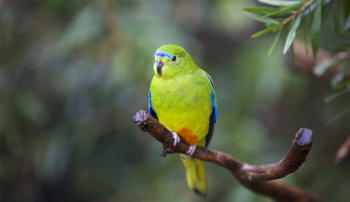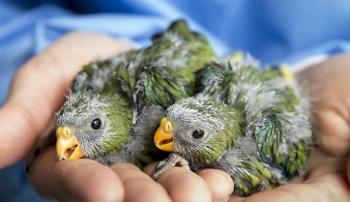Orange-bellied Parrot
One of only a few migratory parrot species in the world, the Orange-bellied Parrot is critically endangered.
There are very few Orange-bellied Parrots left in the wild, and they are at risk of extinction in the next 3-5 years. The parrots breed in Melaleuca, on the west coast of Tasmania, feeding on button grass seeds. Every winter the parrots fly to the south east of mainland Australia.

The major threats
One of the main threats to the Orange-bellied Parrot is the lack of females in the wild. There has also been a recent outbreak of Beak and Feather disease in their breeding region. Other threats include habitat loss, and the increase of predators and noxious weeds.

The plan for fighting extinction
Zoos Victoria is playing a key role in the recovery of this species. We maintain a viable captive population at our zoos to insure against the extinction of the Orange-bellied Parrot in the wild. We also provide support for the annual releases and over-winter ranching of this beautiful species.
How you can help
- Raise community awareness and support for the Orange-bellied Parrots.
- Join the Birds Australia Mainland Winter Census and see if you can locate any Orange-bellied Parrots.
- Visit our zoos to support our work to fight extinction.
- Donate if you can, because every little bit helps. As we are a not for profit organisation, all donations go towards our important conservation efforts.
- Discover more about local conservation events and join the growing number of wild activists taking action for local wildlife.
